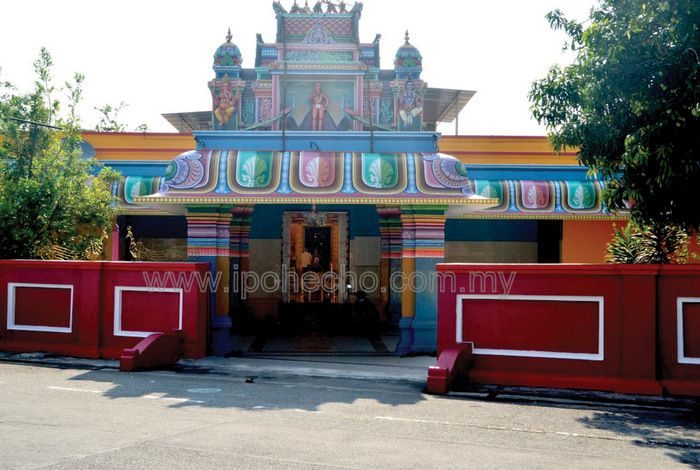

Also known as Chettiar Temple, the Sri Thandayuthabani Alayam at Jalan Lahat is well known to Hindu devotees in Ipoh and in Perak. It is well patronised, especially during the Vaikasi Visagam festival which falls during the Tamil month of Vaikasi (usually in May). Vaikasi is the second month in Tamil calendar. Vaikasi Visagam is believed to be the day of incarnation of Lord Murugan (for whom Hindus celebrate Thaipusam).
This temple was originally built by Chettiars for Chettiar devotees. However, today the temple welcomes all Hindus, regardless. The Chettiars originated from Tamil Nadu and Burma. They came to Malaya as merchants.
Chettiar is one of the many Hindu castes. The title is used by the mercantile, agricultural and land-owning caste from South India. The Chettiars, in those days, would bring with them a statue of Lord Murugan in Thandayuthabani form, the bachelor form of Lord Murugan.
The Chettiars believed that this form of Lord Murugan, who is without family ties like them can be brought away from their land without restrictions like other Hindu gods and goddesses. Thus, temples built by the Chettiars are always named after Lord Thandayuthabani.


In 1870, the first batch of Chettiars landed in Taiping and built a temple for themselves. They worked in warehouses, as they were well-known merchants. Later some of them moved to other parts of Perak such as Gopeng and Jalan Belfield, Ipoh to expand their business. They found it difficult to travel frequently from their new homes and to temple.
The Chettiars are very particular about their religious rites and prayers. For convenience, they built another Thandayuthabani temple on Jalan Lahat. And that is how this temple came into being.
Groundwork for the temple began 1904 and was completed somewhere in 1907. The Chettiar community still manages the century-old temple today. The structure of this temple resembles the architecture of a traditional Chettiar house in Tamil Nadu. The entrance leads to a traditional veranda accentuated by a pillared hallway.
The 112-year old temple retains its original architecture with some minor alterations done over the years. The temple conducted its 6th Kumbabishegam ceremony once every 12 years. The purpose is to cleanse and to restore the power in the temple’s Gopuram (the monumental entrance tower).
A peepal tree was planted at the rear of the temple the same year the temple was erected. A statue of Lord Ganesha (Lord Murugan’s brother) was then placed beneath the tree. A few years ago the century-old tree was felled and replaced with a new peepal tree.
Darshini Sandrasagaran


